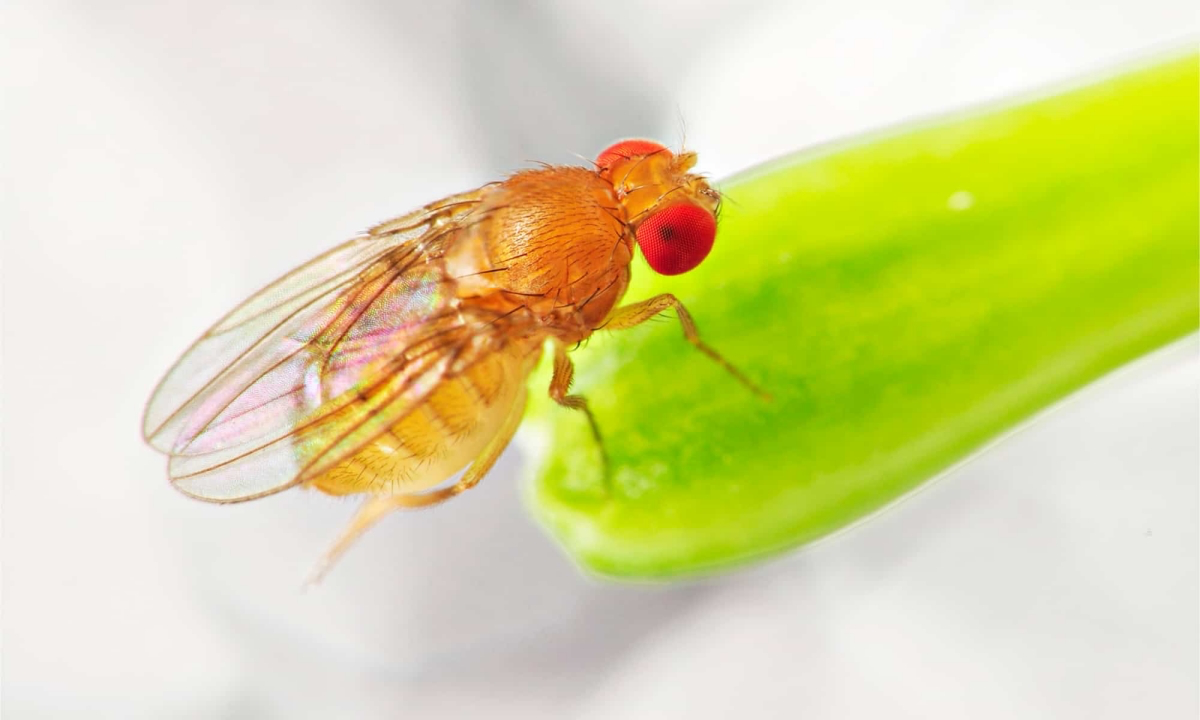How to Get Rid of Fruit Flies in Plants: Complete Guide
Fruit flies, those pesky nuisances, are often attracted to the moist soil and decaying organic matter found in indoor plants. Recognizing the signs of a fruit fly infestation, such as swarms of tiny insects around your plants or noticing them flying up when you water, is the first step in addressing the issue. But fear not! Armed with the information, you’ll be equipped to tackle fruit fly infestations head-on and reclaim your indoor plant oasis. In this comprehensive guide, we will show you how to get rid of fruit flies in plants by exploring effective methods for prevention and control. […]

Fruit flies, those pesky nuisances, are often attracted to the moist soil and decaying organic matter found in indoor plants. Recognizing the signs of a fruit fly infestation, such as swarms of tiny insects around your plants or noticing them flying up when you water, is the first step in addressing the issue. But fear not! Armed with the information, you’ll be equipped to tackle fruit fly infestations head-on and reclaim your indoor plant oasis. In this comprehensive guide, we will show you how to get rid of fruit flies in plants by exploring effective methods for prevention and control. From natural remedies to chemical solutions, we’ll cover a range of strategies to help you combat these persistent pests and protect your beloved plants. So let’s roll up our sleeves and get to work on banishing those fruit flies for good!
Learn how to effectively get rid of fruit flies in plants and keep your plants thriving

Understanding Fruit Flies in Plants
Fruit flies, those minuscule nuisances, are naturally drawn to the moist soil and decaying organic matter commonly found in indoor plants. These tiny insects lay their eggs in the damp soil, where the larvae feed on organic matter, exacerbating the issue. Their presence can often be detected by observing swarms of these tiny insects hovering around your plants or noticing them darting up when you water. Recognizing these signs is crucial as it serves as the initial step in addressing the issue and preventing further infestation.
These flies are naturally drawn to the moist soil and decaying organic matter

Causes of Fruit Fly Infestation
Various factors contribute to the infestation of fruit flies in indoor plants. One common cause is the presence of overripe fruits nearby, which serve as attractive breeding grounds for fruit flies. Additionally, damp potting soil and excessive moisture create ideal conditions for fruit fly eggs to hatch and thrive. Indoor plants that are consistently overwatered or placed in areas with poor ventilation are particularly susceptible to fruit fly infestations. Understanding these underlying triggers is key to implementing effective preventative measures to keep fruit flies at bay and safeguard the health of your indoor plants.
Understanding the most common causes of fruit fly infestation is crucial
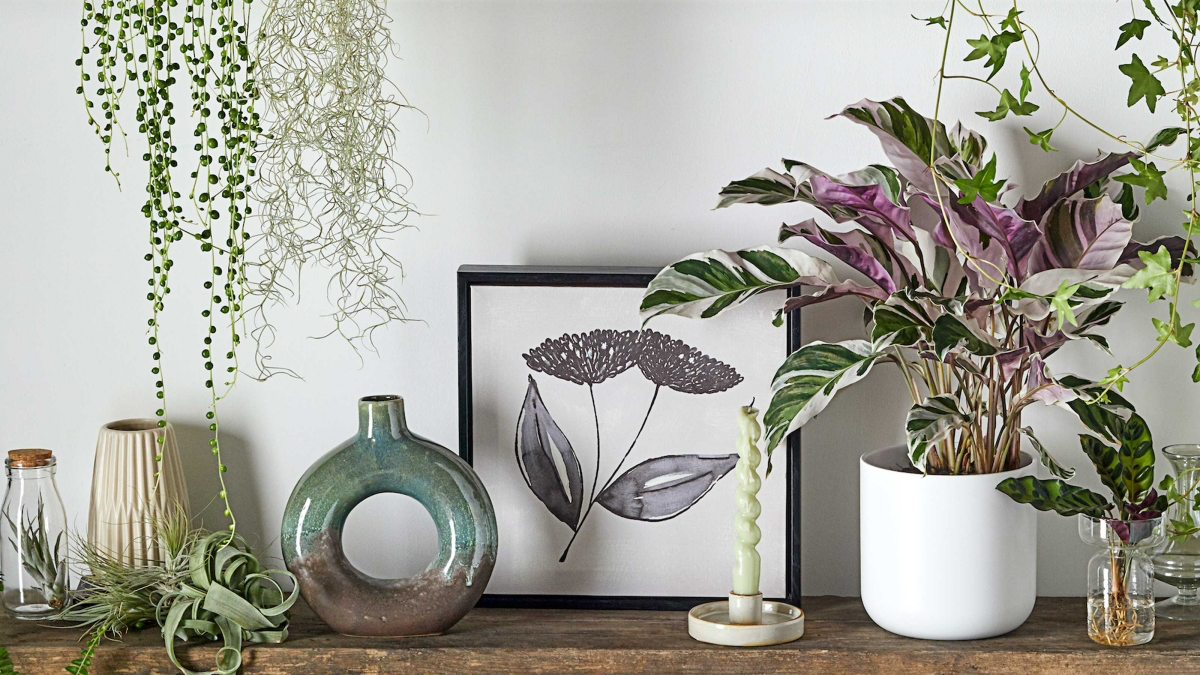
Most Common Reasons for Fruit Flies
Presence of overripe fruits nearby
Overripe fruits emit a strong scent that attracts fruit flies, making them ideal breeding grounds. Fruit flies lay their eggs on the surface of these fruits, and when the eggs hatch, the larvae feed on the decaying flesh. If indoor plants are located near areas where overripe fruits are present, such as kitchen countertops or dining tables, fruit flies may migrate to the nearby plants in search of additional food sources.
Overripe fruits emit a strong scent that attracts fruit flies like no other

Damp potting soil
Fruit flies are drawn to moist environments, making damp potting soil an attractive location for egg-laying and larval development. When potting soil remains consistently wet or water accumulates at the bottom of plant containers due to poor drainage, it creates an ideal habitat for fruit flies to thrive. The moist conditions facilitate the hatching of fruit fly eggs and provide ample moisture for the larvae to feed and grow.
Damp potting soil is an attractive location for egg-laying and larval development

Excessive moisture in the soil
Overwatering indoor plants or using pots with inadequate drainage can lead to excessive moisture in the soil. This excess moisture not only promotes the growth of mold and fungi but also creates a hospitable environment for fruit flies. The damp soil provides the necessary humidity for fruit fly eggs to hatch and for larvae to survive. Additionally, stagnant water in the soil can contribute to the breakdown of organic matter, further attracting fruit flies to the area.
Excess moisture promotes the growth of mold and fungi and attracts fruit flies
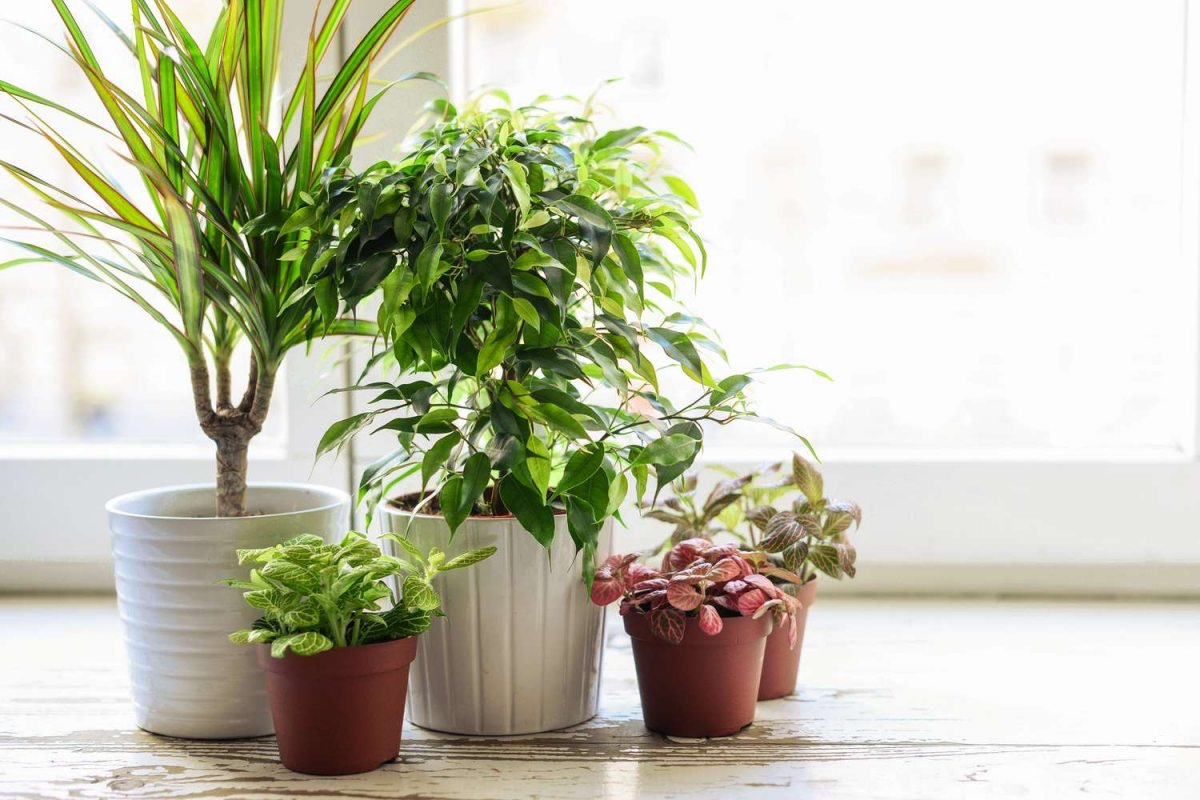
Lack of proper ventilation around indoor plants
Poor air circulation around indoor plants can contribute to fruit fly infestation. Without adequate ventilation, humidity levels may remain high, especially in enclosed spaces or areas with limited airflow. High humidity encourages fruit fly activity and accelerates the decomposition of organic matter, making indoor plants more susceptible to infestation. Proper ventilation, such as opening windows or using fans, can help reduce humidity levels and deter fruit flies from congregating around plants.
Opening windows or using fans will help with the air circulation in the room

Decaying organic matter
Dead plant material, fallen leaves, or other decaying organic matter in the vicinity of indoor plants can serve as a food source for fruit flies. As organic matter breaks down, it releases odors and compounds that attract fruit flies seeking nutrients and breeding sites. Regularly removing fallen leaves, pruning dead foliage, and cleaning up plant debris can help minimize the availability of food sources for fruit flies and reduce the likelihood of infestation.
Removing fallen leaves, pruning dead foliage, and cleaning up plant debris is key

Prevention Measures
- Keep plants clean: Regularly inspect your indoor plants for fallen leaves, dead foliage, or any other organic debris that may accumulate in the soil or around the base of the plants. Removing this plant material promptly can eliminate potential breeding sites for fruit flies.
- Avoid overwatering: Overwatering can lead to excess moisture in the soil, creating a favorable environment for fruit flies to thrive. Be mindful of your watering habits and allow the soil to dry out slightly between waterings to prevent waterlogged conditions.
- Remove overripe fruits: If you have fruit-bearing plants nearby, such as citrus trees or potted herbs, ensure that any overripe fruits are promptly removed from the area. Fruit flies are attracted to the sweet, fermenting aroma of ripe fruits and will lay their eggs on the surface, leading to infestation.
- Proper drainage: Use pots with adequate drainage holes to allow excess water to escape freely from the soil. Ensure that water does not accumulate at the bottom of the pots, as stagnant water can create a breeding ground for fruit flies and other pests.
- Maintain good airflow: Adequate ventilation around indoor plants can help reduce humidity levels and discourage fruit fly activity. Consider placing plants in well-ventilated areas of your home or using fans to improve air circulation around plants.
Make sure that water does not accumulate at the bottom of the plant pots

How to Get Rid of Fruit Flies in Plants: Natural Remedies
Vinegar traps
Vinegar traps are a simple yet effective method for controlling fruit flies in indoor plants. To create a homemade vinegar trap, start by filling a small container with apple cider vinegar or white vinegar. The strong, sweet scent of vinegar acts as a powerful attractant for fruit flies, drawing them towards the trap. Additionally, add a few drops of dish soap to the vinegar solution. The dish soap breaks the surface tension of the vinegar, causing fruit flies that come into contact with the liquid to sink and drown.
Fill a small container with apple cider vinegar or white vinegar
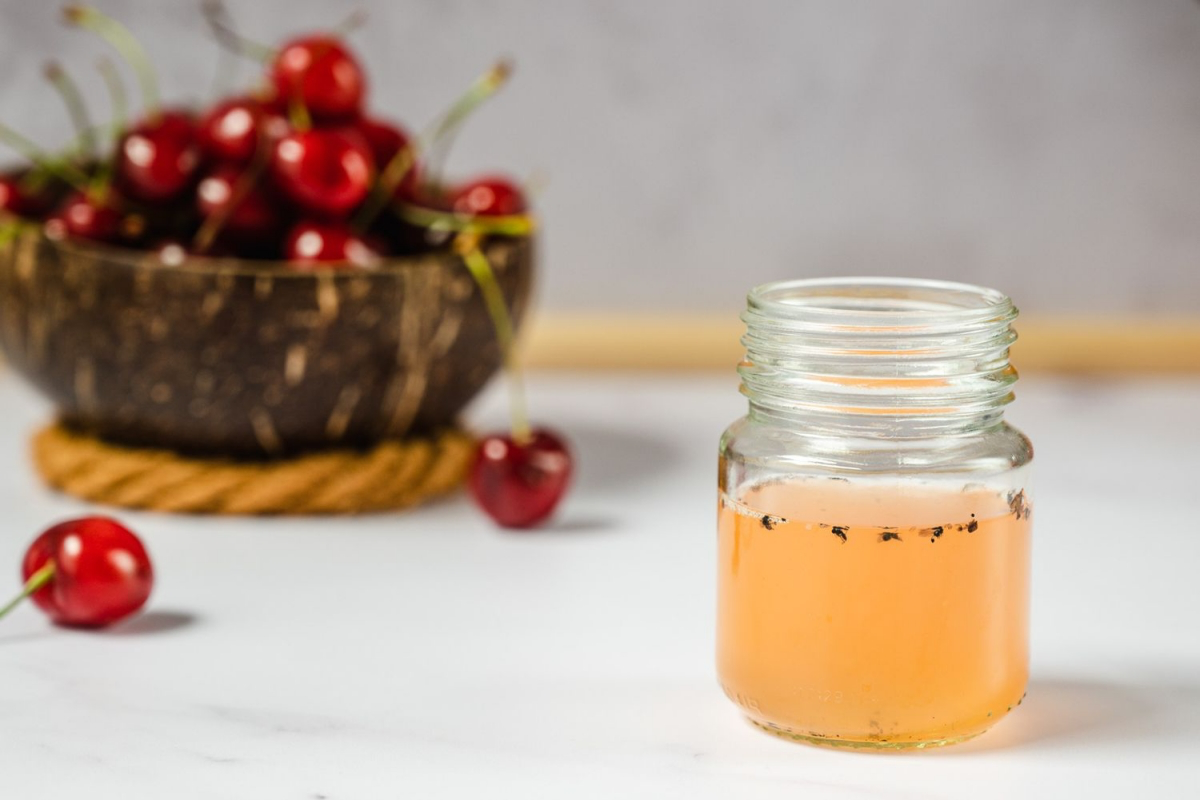
Essential oils
Essential oils offer a natural and fragrant way to repel fruit flies from indoor plants. Certain essential oils, such as peppermint, lavender, or eucalyptus oil, are known for their insect-repellent properties. To use essential oils as a fruit fly deterrent, dilute a few drops of your chosen oil in water and transfer the solution to a spray bottle. Thoroughly mist the area around your plants with the diluted essential oil solution, ensuring to cover both the plants and surrounding surfaces. Alternatively, you can use an essential oil diffuser to disperse the scent throughout the room, creating a fragrant barrier that fruit flies find unpleasant and avoid.
Mist the area around your plants with a diluted essential oil solution
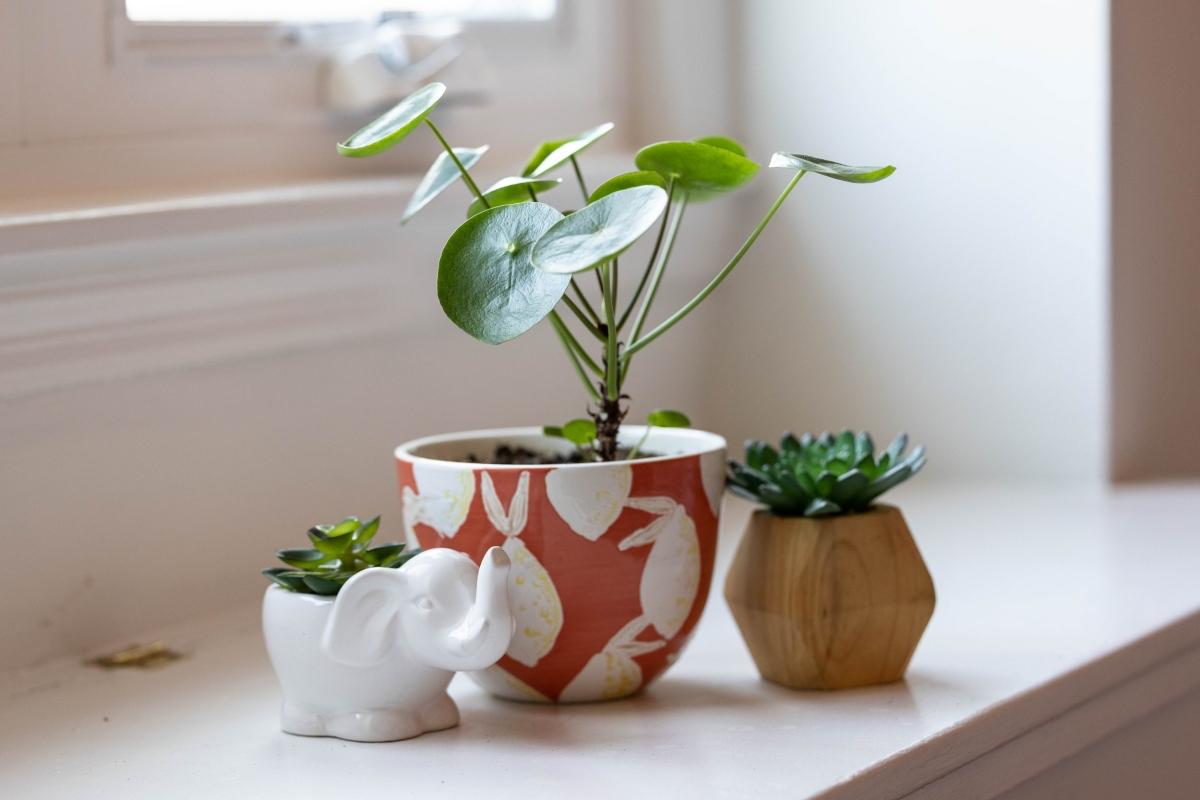
Fruit fly repellent plants
Incorporating natural repellent plants into your indoor plant collection can help deter fruit flies and other insects. Basil, mint, and marigolds are examples of aromatic herbs that emit scents that are unappealing to fruit flies. By planting these repellent plants near your indoor plants or placing potted herbs strategically around your home, you can create a natural barrier against fruit flies. Not only do these plants serve as decorative additions to your indoor space, but they also provide an effective and environmentally-friendly solution for keeping fruit flies at bay.
Basil, mint, and marigolds are herbs that emit scents that are unappealing to fruit flies

How to Get Rid of Fruit Flies in Plants: Chemical Solutions and Commercial Products
- Insecticidal soaps: Insecticidal soaps are low-toxicity pesticides that can effectively control fruit flies and other soft-bodied insects. These soaps work by suffocating the pests on contact, making them an eco-friendly option for indoor plant pest control.
- Pyrethrin-based insecticides: Pyrethrin-based insecticides are derived from the chrysanthemum flower and are highly effective against fruit flies and other flying insects. These insecticides disrupt the nervous system of pests, leading to paralysis and eventual death.
- Fly traps and sticky tapes: Commercial fly traps and sticky tapes are convenient options for trapping fruit flies and preventing them from breeding. These traps use attractants or pheromones to lure fruit flies into the sticky surface, where they become trapped and unable to escape.
- Biological control agents: Some beneficial insects, such as predatory mites or parasitic wasps, can be used as biological control agents to target fruit fly larvae in the soil. These natural predators feed on the larvae, helping to reduce fruit fly populations in indoor plants.
Sticky tapes are convenient options for trapping fruit flies and preventing them from breeding
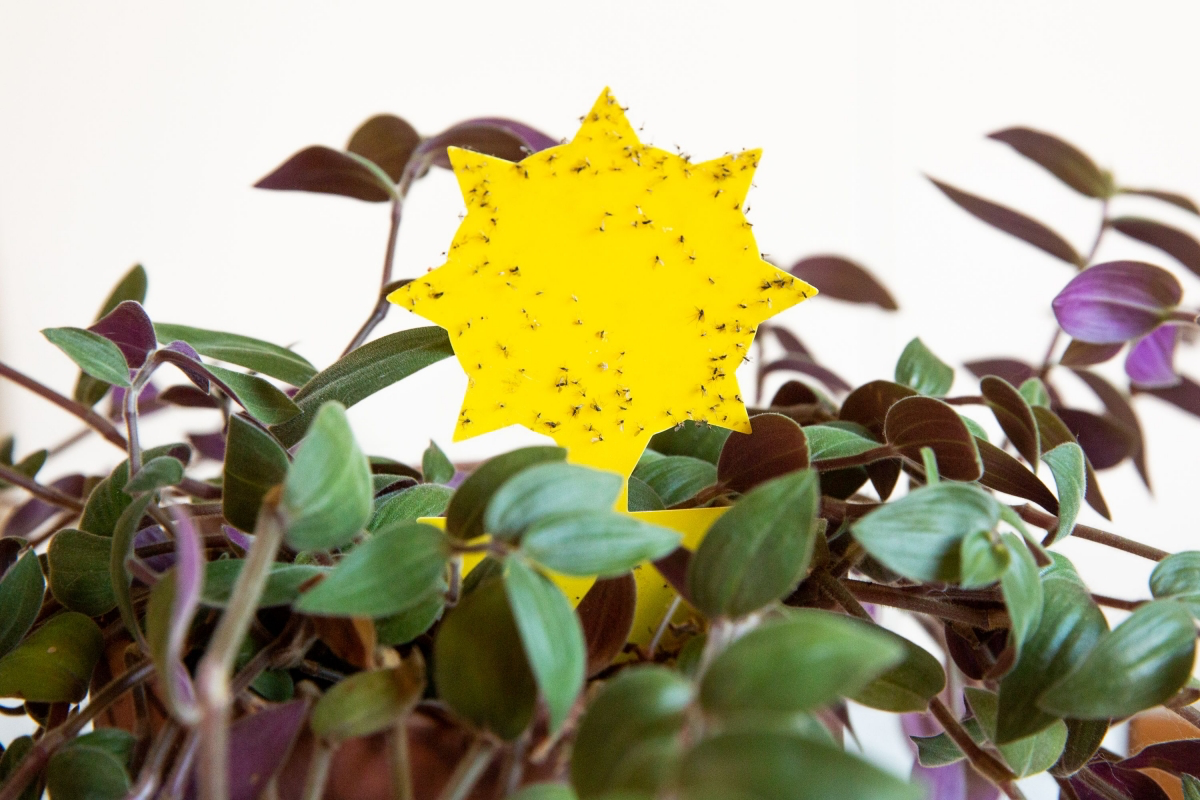
Step-by-Step Guide to Eliminating Fruit Flies from Plants
- Identification: Begin by inspecting your indoor plants meticulously for signs of fruit fly infestation. Look closely for swarms of tiny insects hovering around the plants, particularly near the soil surface. Additionally, check for any overripe fruits, decaying organic matter, or moist areas.
- Isolation: Upon identifying plants with fruit fly infestations, it’s crucial to isolate them promptly to prevent the spread of the pests. Move the affected plants to a separate area away from other indoor plants until the infestation is under control. This step helps contain the problem and prevents fruit flies from migrating to healthy plants.
- Cleanliness: Maintaining cleanliness around your indoor plants is essential for preventing fruit fly infestations. Regularly remove fallen leaves, decaying organic matter, and any overripe fruits from the vicinity of the plants. Additionally, keep the soil surface clean by gently brushing away debris to eliminate potential breeding grounds.
- Watering: Avoid overwatering your indoor plants, as excess moisture in the soil can attract fruit flies. Allow the soil to dry out slightly between waterings to discourage pest infestations. Be mindful of watering schedules and adjust them accordingly based on the specific moisture needs of each plant.
- Natural Remedies: Implementing natural remedies can be an effective and eco-friendly way to control fruit flies in indoor plants. Consider setting up vinegar traps near affected plants by filling small containers with apple cider vinegar or white vinegar mixed with a few drops of dish soap. Alternatively, you can create a repellent spray using diluted essential oils such as peppermint, lavender, or eucalyptus.
- Chemical Solutions: If natural remedies fail to address the fruit fly infestation adequately, you may need to resort to chemical solutions or commercial products specifically formulated for pest control. Exercise caution when using chemical treatments and always follow the instructions provided by the manufacturer.
Consider consulting with a pest control professional for guidance on safe and effective products

Additional Tips and Considerations
Plant Health
Throughout the fruit fly eradication process, prioritize the overall health and well-being of your indoor plants. Avoid using harsh chemicals that may harm the plants and opt for safer alternatives whenever possible.
Always prioritize the overall health and well-being of your indoor plants
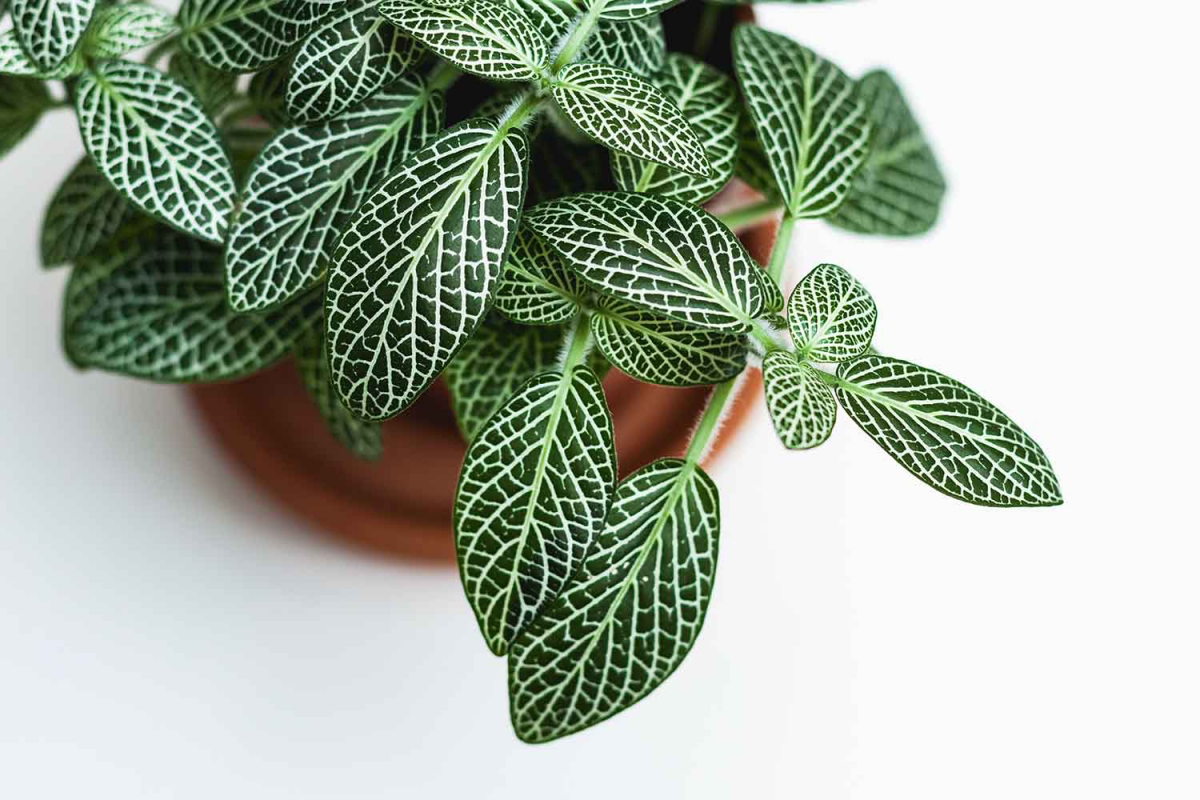
Ventilation
Ensure proper ventilation around your indoor plants to discourage fruit fly infestations. Improve airflow by opening windows or using fans to reduce humidity and moisture levels, creating an environment less favorable for pests.
Improve airflow by opening windows or using fans more often

Monitoring
After implementing fruit fly control measures, continue to monitor your indoor plants regularly for any signs of reinfestation. Stay vigilant and promptly address any pest issues that arise to prevent further spread and damage to your plants. Regular inspections can help maintain a pest-free environment and preserve the health of your indoor plant collection.
It is crucial to monitor your indoor plants regularly for any signs of reinfestation

Conclusion
With a proactive approach and the right strategies, you can successfully eliminate fruit fly infestations from your indoor plants. By following the step-by-step guide and incorporating additional tips for plant health and maintenance, you can restore your plants to a pest-free and thriving state. Don’t let fruit flies diminish the beauty of your indoor oasis—take action today and reclaim your plant paradise!
Now you know how to get rid of fruit flies in your plants and keep them healthy!
